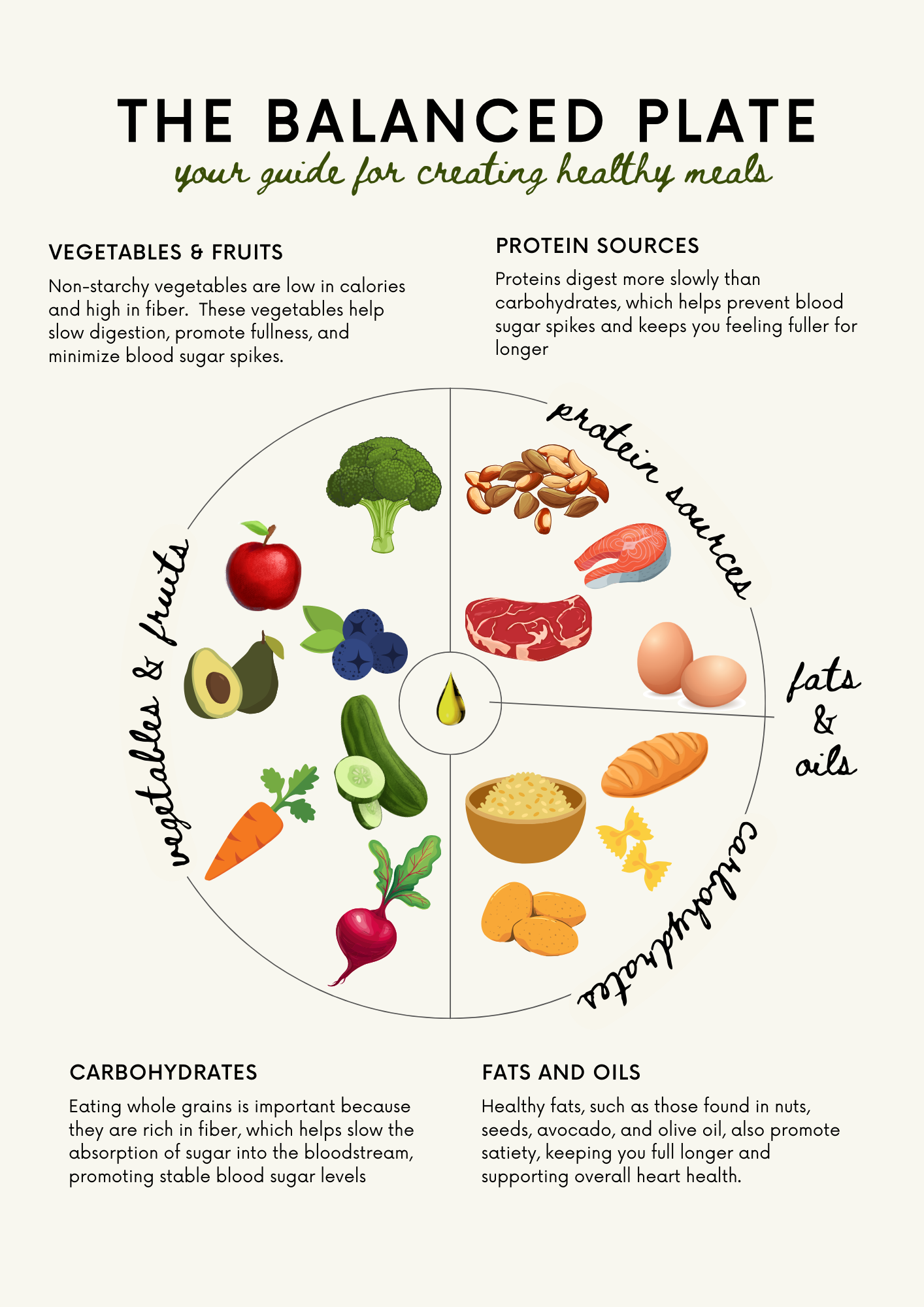Balancing your blood sugar is essential for sustained energy, stable moods, and overall health. This can be achieved through two key strategies: healthy nutrition choices and regular exercise. By combining these habits, you can support your body’s natural ability to regulate blood sugar and enjoy a healthier, more energized lifestyle.
By the end of this article, I hope you will understand a bit more about your blood sugar, why it spikes and crashes, and how to keep it balanced through exercise and nutrition.

Why your blood sugar spikes and crashes
We have all experienced a sugar high – those euphoric moments that follow a high carbohydrate or sugar intake. It feels as if you could conquer the world, nothing is too hard or demands too much energy. But our bodies are not built to process that much sugar at one time, and before you know it, your energy is gone, and everything demands too much energy.
In response, our bodies produce insulin to balance out the sugar overload. The extra insulin decreases the amount of blood glucose, or sugar in the bloodstream, resulting in a sugar crash. The sugar crash, also known as “reactive hypoglycemia,” occurs when blood sugar levels drop rapidly after a spike caused by consuming high-sugar or refined carbohydrate foods.
Not only are high amounts of sugars and carbohydrates responsible for blood sugar imbalance, but also high amounts of unmanaged stress will raise blood sugar levels.
In response to stress, your adrenal glands release cortisol, which plays a role in regulating blood sugar levels. Cortisol tells the liver to release more glucose into the bloodstream, while also making cells resistant to insulin. This results in extremely high levels of glucose in the blood.
Managing your stress is so important for mental, emotional, and even physical health. Engage in regular physical activity and ensure you get enough sleep to regulate your body’s stress response. Additionally, maintaining a balanced diet and avoiding excess caffeine will go a long way to balance your blood sugar.

How Regular Exercise Can Regulate Your Blood Sugar
Regular exercise helps regulate blood sugar by increasing insulin sensitivity, enabling muscles to absorb glucose (sugar) more efficiently during and after activity. Insulin is a hormone that helps the cells in our bodies absorb the glucose in our blood, which we use for energy. Regular exercise uses up glucose directly from your bloodstream, bypassing insulin, and making it easier for your body to break down blood sugar.
Here are actionable tips to incorporate regular exercise into your routine:
- Start Small: Begin with short activities like 10-15 minute walks after meals. Gradually increase duration and intensity.
- Mix It Up: Combine aerobic activities (e.g., jogging) with strength training (e.g., weightlifting) to maximize benefits.
- Stay Consistent: Choose activities you enjoy to build a sustainable habit.

How to Balance Your Plate for Optimal Blood Sugar Regulation
Balancing your plate means creating meals that include a variety of food groups—non-starchy vegetables, lean proteins, whole grains, and healthy fats—to promote stable blood sugar, sustained energy, and overall nutrition. It helps regulate blood sugar levels, control portion sizes, and ensure a well-rounded intake of essential nutrients.
VEGETABLES: Fill half your plate with non-starchy vegetables like spinach, broccoli, or peppers.
Eating non-starchy vegetables is beneficial because they are low in calories and carbohydrates while being rich in fiber, vitamins, and minerals. These vegetables help slow digestion, promote fullness, and minimize blood sugar spikes. Additionally, they support gut health and provide essential nutrients for overall wellness. Examples include leafy greens, broccoli, cucumbers, and peppers. Incorporating them into meals enhances nutritional balance without significantly impacting blood sugar levels.
PROTEIN: Reserve a quarter for lean protein such as chicken, fish, tofu, or legumes.
Eating lean meats and proteins is essential for maintaining stable blood sugar levels, building and repairing tissues, and promoting overall health. Proteins digest more slowly than carbohydrates, which helps prevent blood sugar spikes and keeps you feeling fuller for longer. Lean options like chicken, turkey, fish, eggs, and plant-based proteins (like tofu or legumes) are lower in saturated fats, supporting heart health while providing necessary amino acids. Including protein in meals helps create a balanced plate for sustained energy and improved blood sugar regulation.
GRAINS: Use the remaining quarter for whole grains or starchy foods like quinoa, brown rice, or sweet potatoes.
Eating whole grains is important because they are rich in fiber, which helps slow the absorption of sugar into the bloodstream, promoting stable blood sugar levels. Whole grains, like brown rice, quinoa, oats, and whole wheat, also provide essential nutrients, including B vitamins and minerals, which support energy production and overall health. They keep you feeling full longer and can help manage weight while supporting digestive health.
HEALTHY FATS: Add a small portion of healthy fats, like avocado or olive oil, and drink water or unsweetened beverages.
Eating a small portion of healthy fats helps balance blood sugar levels by slowing digestion, which prevents sudden spikes and crashes. Healthy fats, such as those found in nuts, seeds, avocado, and olive oil, also promote satiety, keeping you full longer and supporting overall heart health. Including them in meals can help sustain energy and provide essential fatty acids your body needs.

Balancing blood sugar is vital for energy, mood stability, and overall health. This can be achieved through healthy eating and regular exercise, which support the body’s natural ability to regulate blood sugar and promote a more energized lifestyle.
Eating Well Tip: Include a mix of protein, healthy fats, and fiber-rich carbohydrates in every meal to keep blood sugar levels stable and energy sustained.
Exercise Tip: Start with 30 minutes of moderate activity, like walking or cycling, most days of the week to boost insulin sensitivity and improve blood sugar control.
Your journey to balanced blood sugar starts with small, intentional steps. Begin by incorporating more whole foods into your meals, moving your body regularly, and maintaining a consistent eating routine. Ready to take control of your health? Start with one change today—your future self will thank you!




